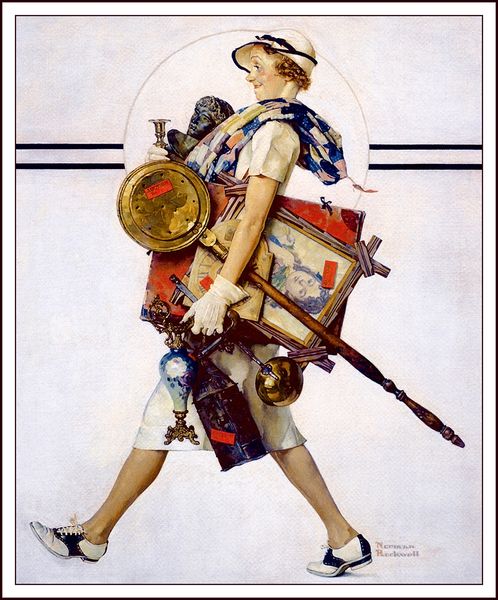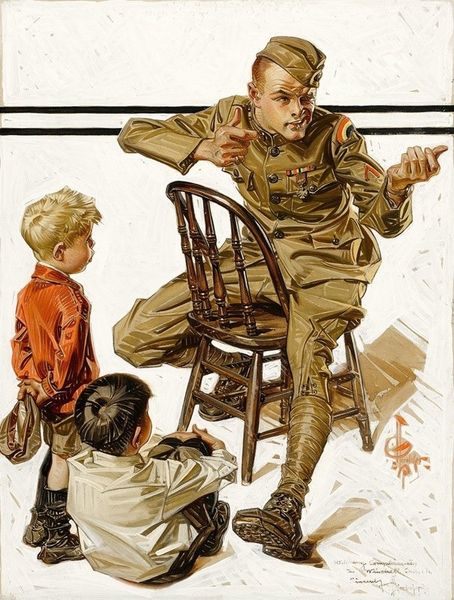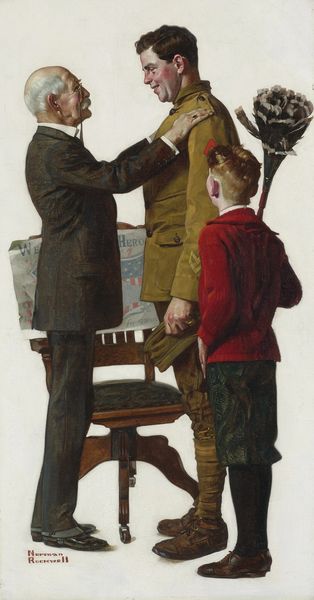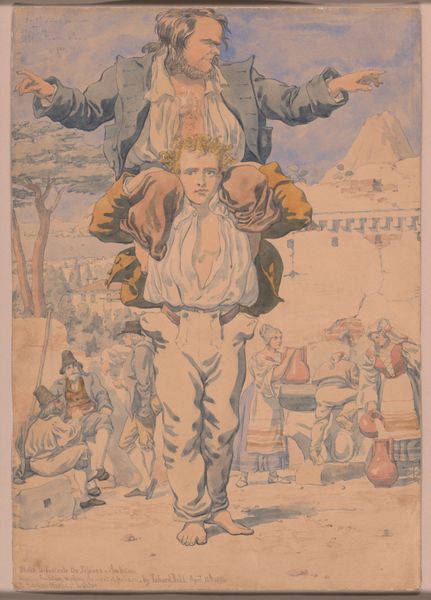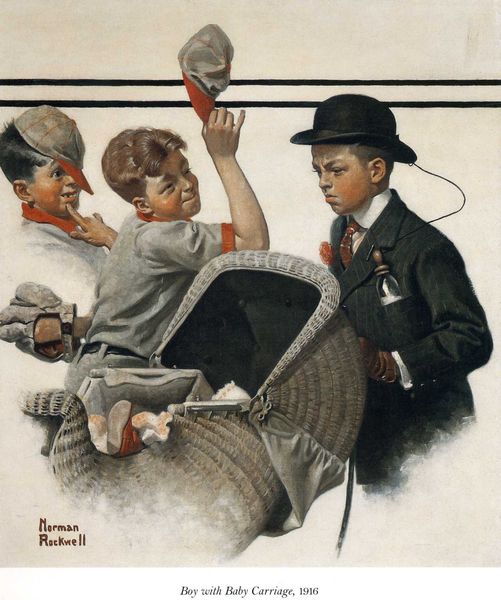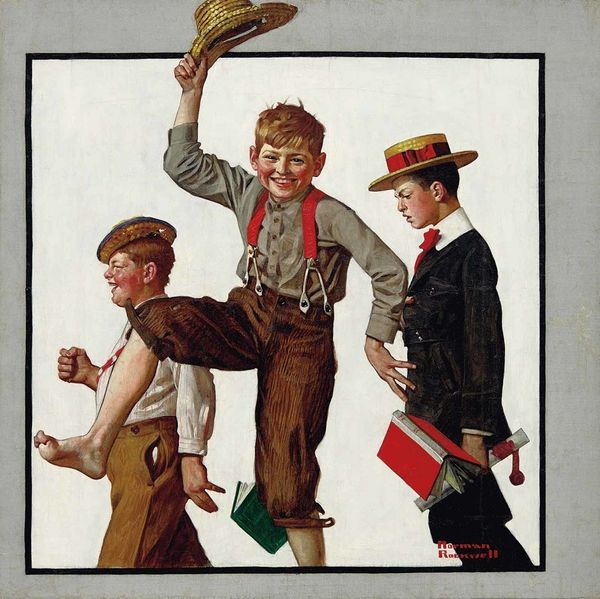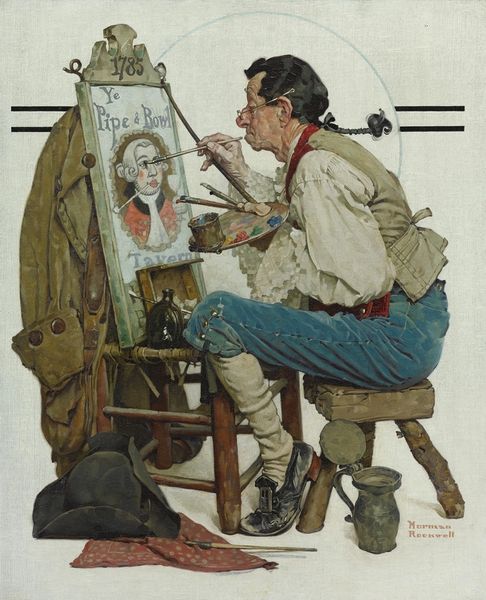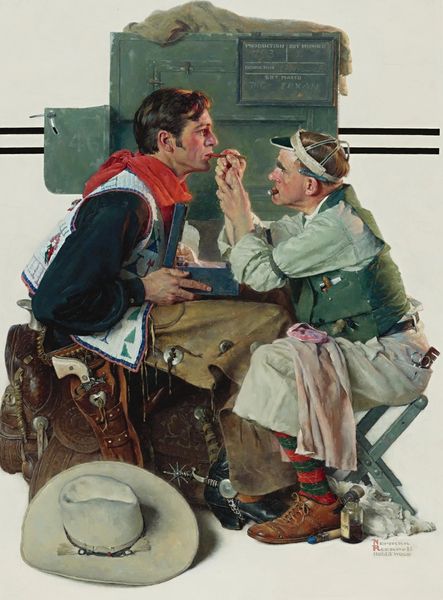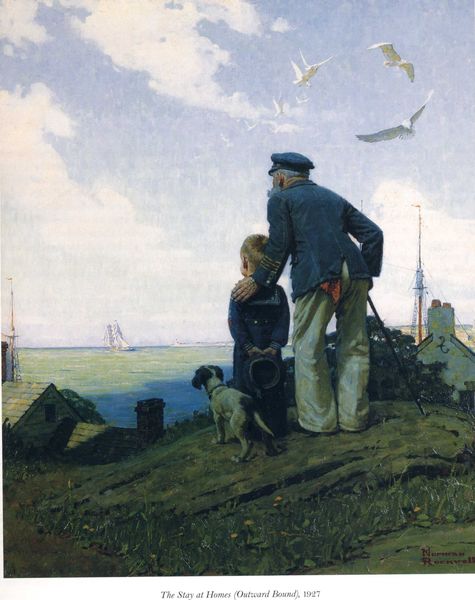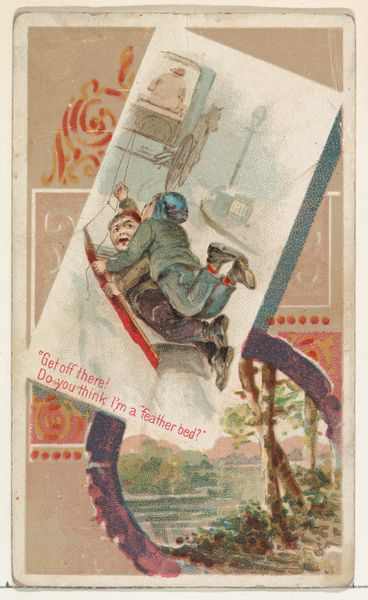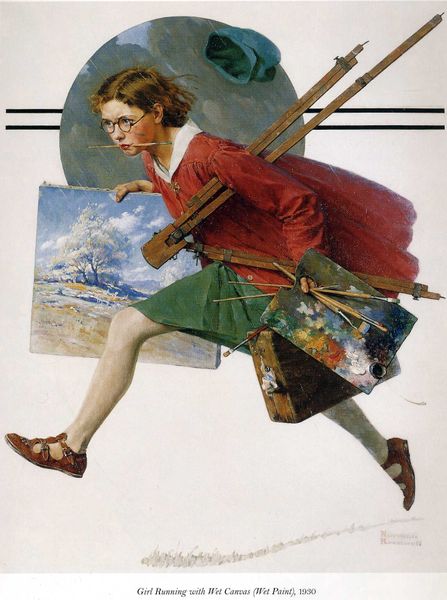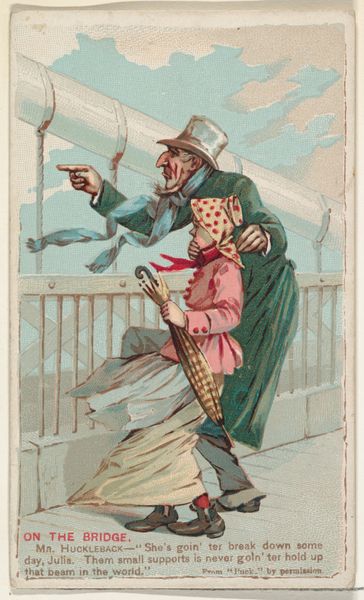
gouache, plein-air, oil-paint
#
portrait
#
gouache
#
narrative-art
#
impressionism
#
gouache
#
plein-air
#
oil-paint
#
landscape
#
oil painting
#
underpainting
#
romanticism
#
genre-painting
Copyright: Norman Rockwell,Fair Use
Curator: Norman Rockwell’s painting, “On Top of the World,” depicts a young boy perched atop a weathervane. The impasto in the rendering of the shingles and clothing catches the light wonderfully. What stands out to you? Editor: He’s utterly isolated up there, but seems perfectly content, lost in thought. There's this wistful gaze out over the landscape—a powerful commentary, perhaps, on the innocence of youth, or the burdens society places upon young people and how that forces isolation and introspection. Curator: Indeed, this feels classic Rockwell; you see that careful balance between aspiration and the material realities that confine us, represented in this picture by the weathervane. The textures are rich—oil paint and gouache worked in a way that elevates the common to something almost heroic. He likely executed it "en plein air," allowing for immediate observations and responsive paint application. Editor: I see that! He is trapped between child and man, neither yet the weathervane cock seems a fitting throne. What a visual metaphor for liminal spaces and that pre-adult uncertainty about defining North, South, East, and West directions of his own. But to make this a point about class too, who is he up there with leisure for a purpose, and what labour enables this vantage? Curator: That consideration is particularly astute. Given Rockwell’s extensive use of photography for preliminary studies, it speaks to how consciously he framed not just the composition but the social dynamic he was staging. Are you perhaps suggesting this wasn't quite an everyday scene, but something more deliberate, mediated? Editor: Exactly. And those carefully placed signs—the North and South labels of the vane itself, the rooftop view... They invite us to examine broader directional themes in the lives of children on the precipice of maturity. They give the scene an odd spatial tension. Curator: You have given me much to consider with this class analysis, this helps expose Rockwell’s construction in terms of representation. I hadn’t looked so critically at those directional signs and the composition itself before your reading, I had always accepted the natural surface of its materiality. Editor: And likewise, I may well return to examining "high-low" artistic class too and see these elements differently on a second viewing—such are the benefits of our dialogues in art, to continually view!
Comments
No comments
Be the first to comment and join the conversation on the ultimate creative platform.
